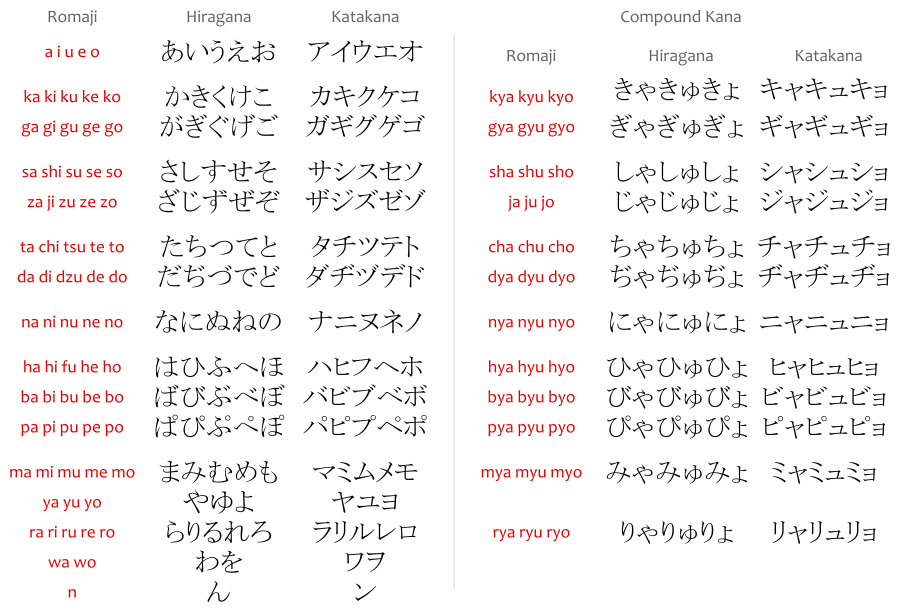In Japanese, the kana 仮名 are the hiragana ひらがな and the katakana カタカナ syllabaries, or the characters (letters) that compose them. The kana, together with the kanji 漢字, would form the entirety of the Japanese alphabet.
Unlike kanji characters, which can be read differently depending on the word, the kana characters are always read the same way (except for when はへを are pronounced wa, e and o), consequently, the kana is normally used to explain how a kanji is supposed to be read.
A way this is done is through the furigana 振り仮名, which is written beside the kanji, and another is the okurigana 送り仮名, which is written after to distinguish between multiple standard readings.
Besides that, diacritics (dakuten 濁点 and handakuten 半濁点) can change the pronunciation of a kana, e.g. ha-ba-pa はばぱ.
For reference, a romaji chart showing an approximation of how the kana are pronounced:
Moraic Kana
The kana are often said to represent syllables, however, they represent moras, an unit of time.
Generally, a single written kana represents one mora of time, meaning two kana take twice as long to pronounce than one, and four take twice as long as it takes to pronounce two.
The term compound kana is used to refer to syllables of one mora written with two or three kana, one normal-sized kana followed by small kana, e.g. kyakya きゃきゃ and kiya きや both take the same time to pronounce, two mora, because kya is compound.
Two kana may represent a single syllable. For example: kou こう is one syllable whose vowel takes two mora to pronounce. This is called a long vowel, and is sometimes represented by the prolonged sound mark ー, like this: koo コー.
Iteration
The symbols ゝゞヽヾ are iteration marks for the kana; they work similar to how 々 works for kanji, although the kana iteration marks are not as common.

No comments: